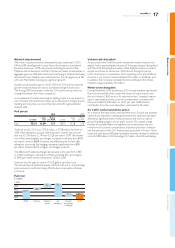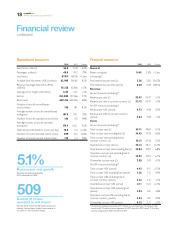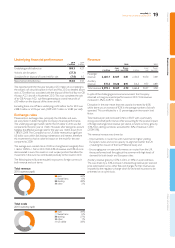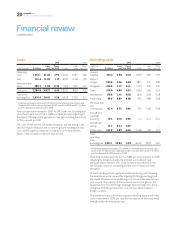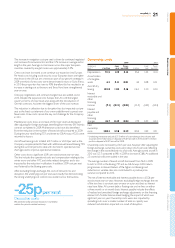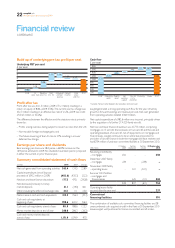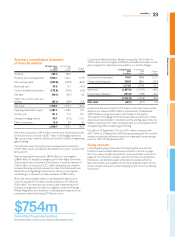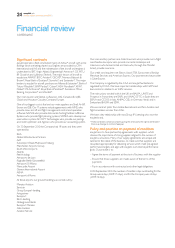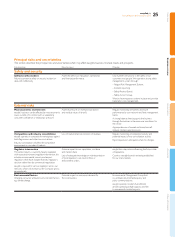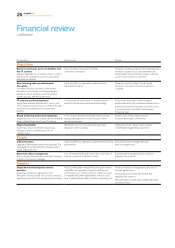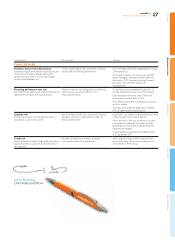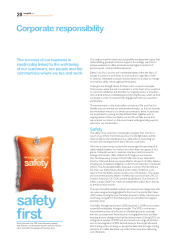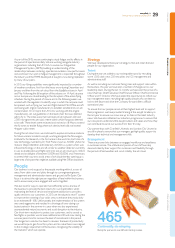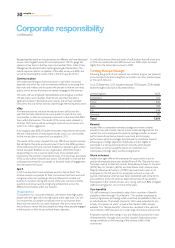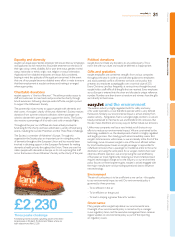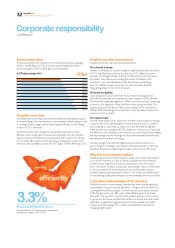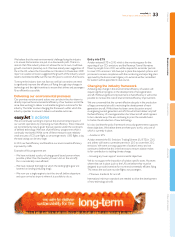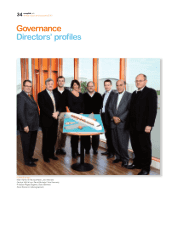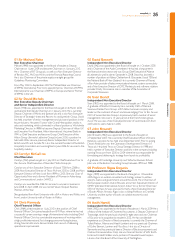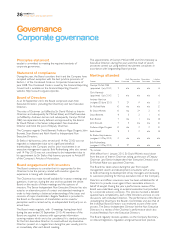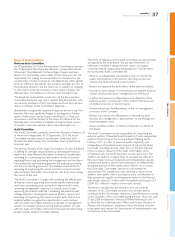EasyJet 2010 Annual Report Download - page 29
Download and view the complete annual report
Please find page 29 of the 2010 EasyJet annual report below. You can navigate through the pages in the report by either clicking on the pages listed below, or by using the keyword search tool below to find specific information within the annual report.
Risk description Potential impact Mitigation
Financial risks
Fuel price and currency uctuations
Sudden and signicant increases in jet fuel price and
movements in foreign exchange rates would
signicantly impact fuel costs and other foreign
currency denominated costs.
If not protected against, this would have a material
adverse affect on nancial performance. Policy to hedge within a percentage band for rolling
24 month period.
To provide protection, the Group uses a limited
range of hedging instruments traded in the over
the counter (OTC) markets, principally forward
purchases, with a number of approved
counterparties.
Financing and interest rate risk
All of the Group’s debt is asset related, reecting the
capital intensive nature of the airline industry.
Market conditions could change the cost of nance
which may have an adverse affect on the
nancialperformance.
Group interest rate management policy aims to
provide certainty in a proportion of its nancing.
Operating lease rentals are a mix of xed and
oating rates (currently 66% to 34%).
All on balance sheet debt is oating rate, re-priced
up to six months.
A portion of US dollar mortgage debt is matched
with US dollar money market deposits.
Liquidity risk
The Group continues to hold signicant cash or
liquid funds as a form of insurance.
Lack of sufcient liquid funds could result in business
disruption and have a material adverse affect on
nancialperformance.
Board policy is to maintain an absolute minimum level
of free cash and money marketdeposits.
Allows business to ride out downturns in business
or temporary curtailment of activities (e.g. eet
grounding, security incident, extended industrial
dispute at key supplier).
Committed borrowing facilities of US$0.75 billion
at 30 September 2010.
Credit risk
Surplus funds are invested in high quality short-term
liquid instruments, usually money market funds or
bank deposits.
Possibility of material loss arising in the event
of non-performance of counterparties. Cash is placed on deposit with institutions base
upon credit rating with a maximum exposure of
£100 million for AAA ratings.
Chris Kennedy
Chief Financial OfficerChief Financial Officer
Overview Business review Governance Accounts Other information
27
easyJet plc
Annual report and accounts 2010


